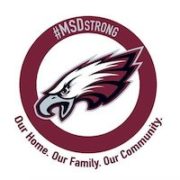Remove the Clutter
Remove the Clutter
Just Do It
One of the hardest parts about getting organized is going through and getting rid of the things that cause distractions and take up space. When you find yourself among the stacks and piles of stuff and items, it can seem overwhelming. But by taking it one step at a time, remembering to breathe, monitoring your thoughts, you can begin to de-clutter your life and start on the path to successful organization.
Sometimes we can feel overwhelmed about taking on the task of removing our clutter and tend to make excuses as to why it doesn’t get done. We can claim that we don’t have the time, or that there is too much to do at once. But as Nike says, we have to “just do it” and we have to throw away our excuses and dive in. Make a plan on how you can get started, such as making a ‘cleaning calendar’ or choosing an area to start on. Stick with your plan until the job is complete, and don’t let the same excuses hinder your success.
Helpful tips:
Make a calendar with time to clean
Divide the areas that need to be conquered Make a list of tasks
Decide where items go beforehand
You Don’t Have to Keep Everything
You know who you are – the person that exclaims “I have to keep [this] because I might need it later!” “You never know”, or “What if I need it someday?”
In reality, we can throw away over half of our saved papers, documents or items without feeling a sense of loss, withdrawal or consequence. The decision to keep everything can drive us to make inappropriate choices with organization and contributes to more clutter. We can break that kind of thinking by examining what we
are holding on to and by realizing we can’t live by the ‘what ifs’ an item may have. Go through your clutter and clarify how it is useful to you right now and get rid of anything that doesn’t have a clear purpose. Once you have removed the items you don’t need skills, you are no longer wasting time on useless clutter, but are developing better organization for the things you did keep.
Ask yourself:
Am I going to use this in the near future? (If so, when?)
When was the last time I needed this? (More than a year ago?)
If I keep this, what type of category is it organized into? (Keep, donate, trash?)
Three Boxes: Keep, Donate, and Trash
The most common approach to clearing out clutter is the Three Boxes method. This method forces a decision to be made about each item you touch as you go through your clutter. You don’t get to put it aside or come back to it later. Pick up an item, one at a time, and think about which box it should go in. Try not to release the item until a decision is made. (Ask a trusted friend, or relative, or counselor, for help if needed).
Box 1 – Items to Keep: This box is for items you would like to keep in your area or maybe even put away for safe keeping (such as heirlooms or special gifts). This is not to be confused with the ‘things I might need later’ type of thinking. Only keep items that have value and meaning to you.
Box 2 – Items to Donate: This box is for items that you realize you no longer need or want. Items in this box can be donated or sold at a rummage sale, just as long as it leaves the clutter!
Box 3 – Trash: This box is for the things that you do not need or want and cannot be donated or given away. This often includes old papers or documents, mail, or broken items. Once this box is full or complete, remove it from the area right away and don’t give it a second look.
From our in home or in office Educational Coaching and Counseling Programs. https://www.supportforstudentsgrowthcenter.com/in-home-educational-coaching/
Dr. Eric Nach, Ph.D., M.Ed., A.S.D. Cert. Developmental and Behavioral Specialist and Associates
Info@SupportForStudentsGrowthCenter.com www.SupportForStudentsGrowthCenter.com





